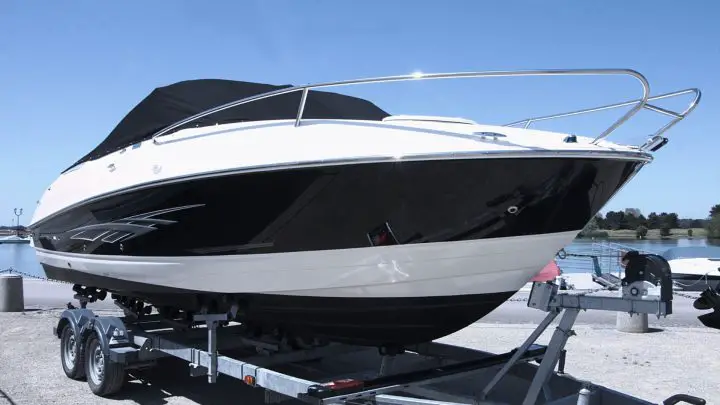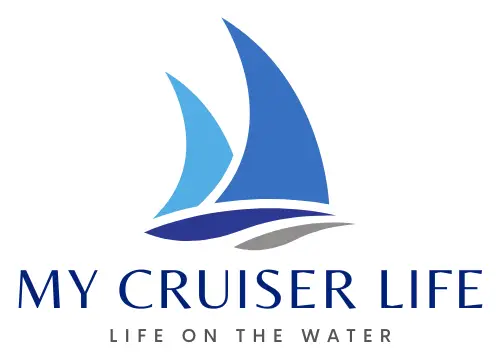Timing your boat purchase strategically can save you thousands of dollars. Most buyers make costly mistakes by shopping during peak season when prices are at their highest. Dealers strategically adjust pricing based on demand cycles, while experienced boaters secure identical vessels for 15-30% less by targeting industry slow periods. The best time to buy a boat depends on understanding these market fluctuations that dealerships rarely advertise. Knowing the optimal purchasing window, regional timing differences, and recognizing when sellers are genuinely motivated can create negotiating leverage that translates to significant savings on your dream vessel.

Table of Contents
- Seasonal Boat Buying Overview
- Spring Boat Buying
- Summer Boat Buying
- Fall Boat Buying
- Winter Boat Buying
- Can boats go up in value?
- Master Seasonal Boat Buying
- FAQs – The Best Time to Buy a Boat
Seasonal Boat Buying Overview
When it comes to boat buying, timing can save you serious cash. The boating market swings like a pendulum between buyers’ and sellers’ markets, creating price differences of 15-30% throughout the year.
Fall emerges as the sweet spot for savvy buyers. Marine dealers face pressure to clear inventory before winter storage costs kick in, and manufacturers often roll out rebates to move current models before next year’s lineup arrives. With fewer buyers competing, you’ll have better negotiating power and more personal attention from sales staff. Many dealers will even throw in winter storage and spring commissioning to seal the deal.
Spring and summer? That’s when everyone wants a boat, driving prices to their peak. Popular models fly off lots, waiting lists form, and your bargaining chips disappear faster than wake behind a speedboat. You might pay 20% more for the same boat you could’ve bought in October.
Winter boat shows offer another opportunity, especially for previous year models. While northern markets see dramatic seasonal swings, year-round boating areas like Florida show gentler price variations. The key is starting your research early, knowing exactly what you want, and being ready to pounce when that perfect October deal surfaces – with financing pre-approved and insurance quotes in hand.
Related: Barletta vs Bennington: Which Pontoon Boat Is Better?
Spring Boat Buying
Spring is exciting for more reasons than one: Not only are boaters in Northern climates gearing up for another season on the water, but builders from around the globe are preparing to launch new models featuring the latest innovations. After months of winter daydreaming about life on the water, buyers flood dealerships like eager kids at a candy store, creating a perfect storm of high demand and peak pricing.
When manufacturers roll out their newest models each spring, they’re not just unveiling boats – they’re showcasing dreams wrapped in fiberglass and chrome. Builders from around the globe are preparing to launch new models featuring the latest innovations. These aren’t your dad’s boats either. We’re talking cutting-edge navigation systems, touchscreen controls that’d make a Tesla jealous, and safety features that practically sail themselves.
The spring boat show season is approaching quickly, promising many opportunities for members of the boating community to connect and explore the latest boats, technology, and gear. Major events kick off the season with fanfare, bringing together everything from budget-friendly bowriders to million-dollar yachts under one roof (or dock).
Pros:
- First dibs on brand-new model year boats with the latest technology
- Boat shows offer hands-on comparisons and educational seminars
- Widest selection of current models available
- Perfect timing to get on the water for the summer season
Cons:
- Peak pricing – expect to pay 15-20% more than fall
- Intense competition from other buyers reduces negotiating power
- Popular models sell out quickly, creating waiting lists
- Dealers are less motivated to offer discounts or incentives
Summer Boat Buying
With everyone already splashing around and posting their lake life photos on Instagram, the fear of missing out hits different. This is peak season in every sense: peak demand, peak prices, and peak frustration for bargain hunters.
The market dynamics shift dramatically once Memorial Day hits. Suddenly, every weekend warrior wants their piece of the aquatic action. While it’s still a seller’s market, boat buyers have more negotiation power now than they’ve had during the last few years. That said, summer remains the worst time to negotiate – dealers know you’re desperate to join the party before Labor Day signals the season’s end.
Inventory becomes a real wild card during these months. Popular models vanish faster than ice in a cooler, and what’s left often comes with inflated price tags or unwanted add-ons. Despite economic uncertainties, demand for boats has remained relatively strong, with certain segments, such as entry-level boats, disappearing first as newcomers rush to join the boating lifestyle.
Pros:
- Immediate gratification – buy today, boat tomorrow
- Full-service departments ready for instant setup
- Can thoroughly test boats in ideal conditions
- Marina slips and services are readily available
Cons:
- Highest prices of the year (20-30% premium)
- Limited inventory on popular models
- Zero negotiating leverage with dealers
- Emotional buying leads to overspending
- The used boat market is equally inflated
Related: Catamaran vs Pontoon — Facts Buyers Should Know
Fall Boat Buying
As the leaves turn and water temperatures drop, the market transforms from a seller’s paradise to a buyer’s playground. This seasonal shift creates opportunities that simply don’t exist during peak boating months.
Private sellers face a ticking clock as winter storage deadlines approach. Nobody wants to pay for winterization and months of storage on a boat they’re trying to unload. This urgency translates into motivated sellers who’d rather cut prices than cut checks to the marina. Now that there’s more inventory available, there’s also more room for discounting. Trade-ins flood dealer lots as owners upgrade before winter, creating a buyer’s market for quality used boats.
Dealers join the markdown madness with their motivations. Effective boat inventory management practices are key to your results, your department’s success, and your dealership’s profitability and longevity, especially in a softer market. Floor planning costs pile up, and smart dealers know it’s better to move inventory at reduced margins than carry it through winter.
Pros:
- Best prices of the year on used boats
- Motivated private sellers facing storage deadlines
- Dealers offer aggressive trade-in deals
- Less competition from other buyers
- End-of-model-year clearances on remaining new inventory
- More time for thorough inspections without pressure
Cons:
- Limited selection as the best boats sell first
- Shorter time to enjoy the boat before winter
- May need immediate winterization
- Some sellers have already stored boats for winter
Winter Boat Buying
While everyone else is dreaming of spring, smart buyers bundle up and score the year’s best deals. The market hits rock bottom between December and February, creating opportunities that make summer prices look downright ridiculous.
“Pontoons, ski-wakeboats, center-consoles, bow riders — those tend to be the favorite types, particularly on Boat Trader,” says Chalmers. These popular models that commanded premium prices in summer now sit under shrink wrap, costing dealers daily in floor plan interest. Inventory that didn’t move during fall clearances becomes a liability, and dealers get creative with incentives to avoid carrying costs through the frozen months.
Storage perks sweeten these off-season deals considerably. Desperate to move metal (or fiberglass), dealers often throw in free winter storage, spring commissioning, and even slip reservations for the following season. That’s potentially thousands in savings beyond the sticker price. Some even offer heated indoor storage – a premium service that usually costs more than your monthly car payment.
Pros:
- Absolute lowest prices of the year (30-40% below summer)
- Free storage and commissioning packages are common
- Virtually no competition from other buyers
- Dealers are most willing to negotiate on price and extras
- Time to research and plan modifications over winter
Cons:
- Can’t test boats on water in northern climates
- Limited inventory – only unsold units available
- Long wait until boating season
- May need immediate winterization if not already done
- Fewer private sellers in the market
Can boats go up in value?
Here’s the truth bomb every boat owner needs to hear: most boats depreciate faster than a new car driving off the lot. Yet, before you swear off boat ownership forever, there are some fascinating exceptions to this maritime money pit reality.
According to NMMA data, the average retail price of a new outboard boat (including engine) increased 44% from 2019 to 2022, while pre-owned boats were up 28% over the same period. This pandemic-driven anomaly turned conventional boat wisdom on its head. Suddenly, owners who bought pre-2020 could sell for more than they paid – something previously thought impossible in the boating world.
Classic boats occupy their universe. A well-maintained 1960s Chris-Craft or vintage Hatteras can appreciate like fine wine, especially if it’s got matching numbers and original equipment. Limited production models also buck depreciation trends. Remember when that specific model won a major tournament? These boats develop cult followings that drive values skyward.
Reality check, though: 99% of boats lose value yearly. Maintenance, storage, and upkeep costs usually exceed any appreciation gains.
Master Seasonal Boat Buying
Timing your boat purchase can save you up to 40% off peak summer prices. Fall and winter are a buyer’s paradise—dealers slash prices to avoid storage costs, throw in free commissioning, and are eager to negotiate. Spring brings shiny new models but premium prices, while summer means paying top dollar amid fierce competition.
Do your homework early, get pre-approved financing, and pounce when fall leaves drop. Remember: most boats depreciate like rocks, so your buying strategy can make or break your boating budget, leaving more cash for adventures where it belongs.
FAQs – The Best Time to Buy a Boat
What month is the cheapest to buy a boat?
Late fall through winter, particularly October through February, offers the best boat prices. December and January typically yield the deepest discounts as dealers clear inventory before new models arrive. During these off-season months, sellers face less demand and greater motivation, often accepting 15-25% below peak season prices.
